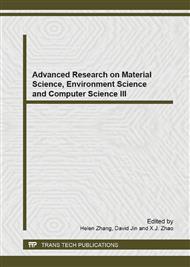p.63
p.66
p.71
p.75
p.80
p.84
p.88
p.92
p.97
Indirect Enzyme-Linked Immune Method for the Detection of Binders in Ancient Chinese Textiles
Abstract:
In this study, an indirect ELISA was applied for specific identification of gelatin and collagen I in the binders of ancient Chinese textiles. The process consists of protein extraction and incubation, blocking, primary antibody incubation, secondary antibody incubation and coloration. To guarantee stringency, both artificially aged samples and archaeological samples were well prepared before testing. The results indicated that all the samples behaved positive for ovalbumin while negative for collagen I. This is the first time ELISA was applied in the detecting of binders of ancient textiles. Compared with other detecting methods, ELISA was sensitive, simple and specific. With such superior features, ELISA will become a frequently-used technique in the detection of proteins in ancient materials.
Info:
Periodical:
Pages:
80-83
Citation:
Online since:
January 2014
Authors:
Keywords:
Price:
Сopyright:
© 2014 Trans Tech Publications Ltd. All Rights Reserved
Share:
Citation:


